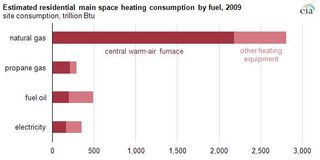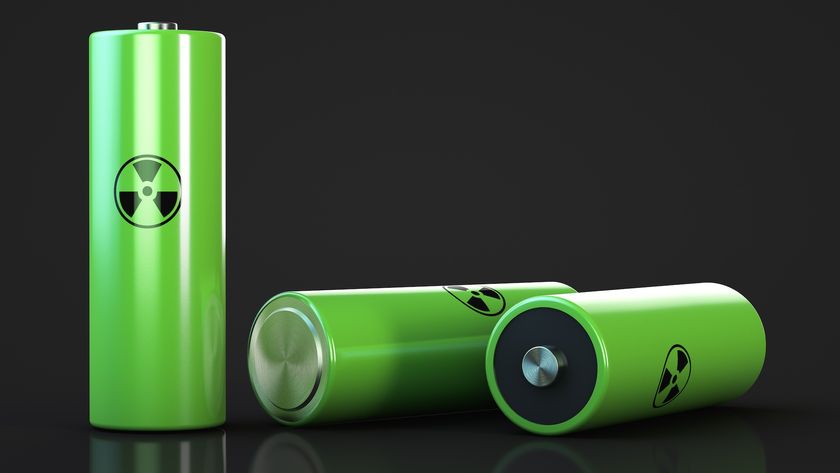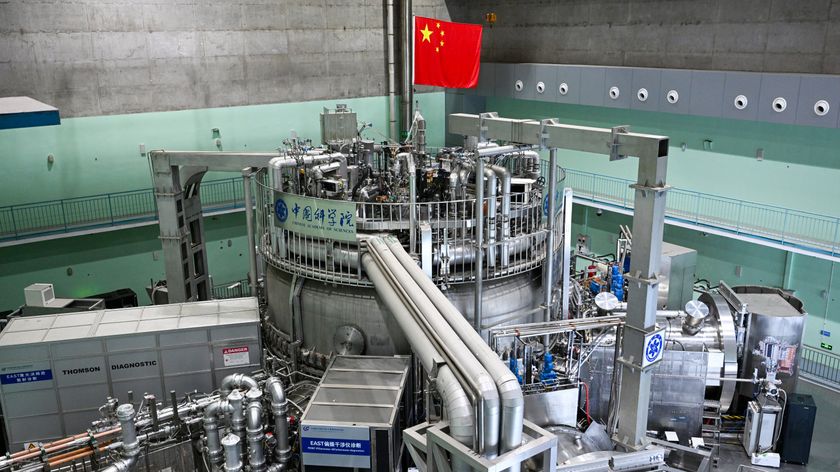
Cold Snaps Highlight Need for Updated Furnace Standards (Op-Ed)

Meg Waltner is a manager of building energy policy for NRDC. This Op-Ed was adapted from a post to the NRDC blog Switchboard. Waltner contributed this article to LiveScience's Expert Voices: Op-Ed & Insights.
When a polar vortex brought subzero temperatures and wind-chill factors even more brutal to many parts of the United States, many Americans huddled inside, with good reason. Unfortunately, not only were they suffering through the extreme cold, but many will be hit with higher heating bills at the end of the month as they pay the price of the energy used to keep their homes safe and warm.
These costly energy bills highlight the need for the U.S. Department of Energy (DOE) to update energy-saving standards for furnaces for the first time in decades and set the first-ever standards for furnace fans (these fans circulate air from the furnace to the rest of your house).
Updated standards for furnaces and furnace fans, combined, could save consumers roughly $37 billion over three decades and reduce cumulative carbon emission by over 500 million metric tons — the equivalent of shutting down about five coal-fired power plants.
The opportunity to reduce energy use — and utility bills — is so large because approximately 40 percent of the energy used on-site in American homes goes to keeping them warm. Yet, standards for furnaces — which represent about half of this site-energy use — essentially haven't been updated since 1987 when the very first furnace standards were established and the technology available to increase furnace efficiency was far less advanced than it is now.
In fact, technological advances in gas furnaces over the last 25-plus years mean that those using condensing technologycan convert as much as 98 percent of the natural gas they burn into usable heat. That's a significant increase over the 80 percent conversion efficiency rate now required by federal standards. (In some places, like the Northeast, furnaces with conversion factors in the 90 percent-and-above range are already quite popular.)
Why the delay?
Sign up for the Live Science daily newsletter now
Get the world’s most fascinating discoveries delivered straight to your inbox.
Why has it taken more than two decades for the DOE to update standards to make sure furnaces don't waste as much energy — and consumer dollars? DOE was supposed to update the standards in 1994, but the agency delayed. In 2007, it finally issued an updated furnace-efficiency standard, but it was essentially a non-standard, because it moved the efficiency requirement from 78 to 80 percent — a level that almost the entire market had already achieved. NRDC and others then sued the DOE; federal law mandates that DOE set standards at the maximum level that's both technologically feasible and cost-justified, which the 2007 standard didn't do. In 2008, the new administration of U.S. President Barack Obama settled that challenge by agreeing to send the rule back to DOE so it could try again to create a standard that meets the maximum efficiency level required by law.

DOE then issued an important new furnace efficiency standard in 2011, but litigation by an industry trade group has delayed it. That standard had been jointly proposed by NRDC, a group of manufacturers, other efficiency advocates and the state of California, and would have required furnaces to be 90 percent or more efficientin the northern United States, while allowing furnaces in the south to continue to meet the 80-percent standard due to the more moderate climate. Initially scheduled to go into effect in May 2013, it would have saved 31 billion therms of natural gas over the next 30 years — enough to heat all the homes in New York State for over 11 years — and saved consumers $10.7 billion on their energy bills.

However, after the industry trade group sued DOE, DOE did an about face and agreed to a proposed settlement that would undo the efficiency standard and have DOE re-start the standard-setting process anew. The court has not yet taken any action on the settlement, and the litigation is still pending. So the nation is in a state of limbo on furnace efficiency until all that is resolved. At this rate, it's likely a new furnace standard won't go into effect until 2020 or later, meaning Americans are losing out on a tremendous opportunity to save both money and carbon pollution. But eventually, we expect DOE to set updated standards at the strongest possible level that is technically feasible and cost effective, which could well be stronger than the 2011 rule.
In the meantime, DOE has made impressive progress in making furnace fans — the fans that circulate air from your furnace to the rest of your house, which are a separate component from the furnace itself — more efficient, with a proposed rule issued this past October that would reduce fan-energy use by 40 percent. That's significant, because a typical furnace fan uses about 800 kilowatt-hours of electricity a year, more than the annual energy use of a new refrigerator and new dishwasher combined. NRDC expects the rule to be finalized sometime this year.
The biting cold temperatures that so many Americans have been experiencing highlight how vulnerable we are to extreme weather. They also call our attention to how many opportunities the DOE has, through efficiency standards, to help Americans save money on energy and cut carbon and other air pollution. The agency should "heat up" the process and fast-track these standards now so Americans and their energy bills aren't left out in the cold.
This Op-Ed was adapted from the post "Cold Snap Highlights Need for Updated Furnace Efficiency Standards" on the NRDC blog Switchboard. The views expressed are those of the author and do not necessarily reflect the views of the publisher. This version of the article was originally published on LiveScience.












